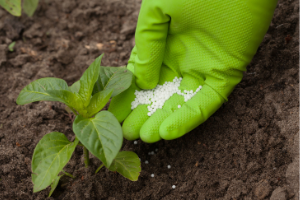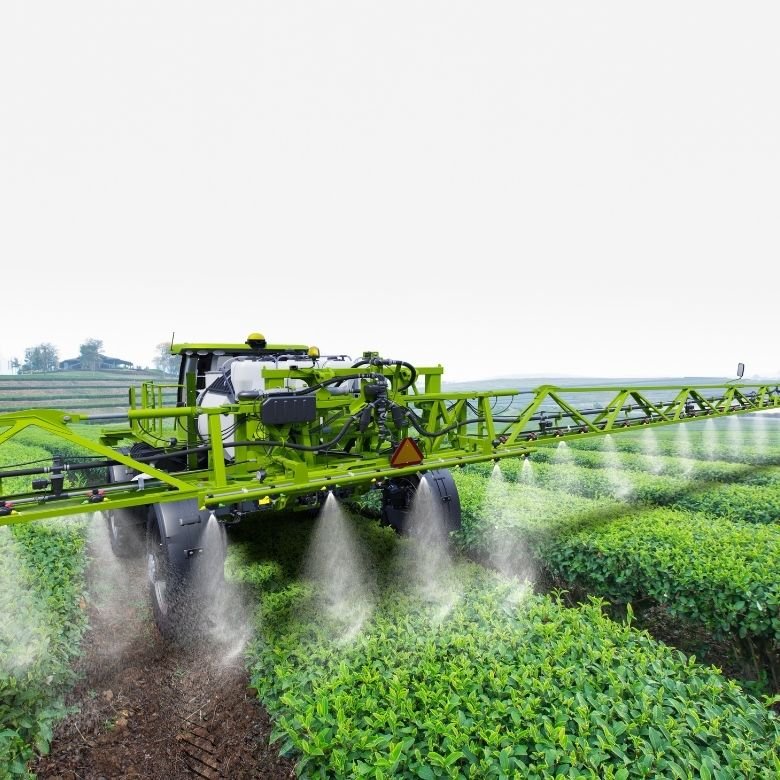The growing population on earth, the improvement of the quality of life and the progress of civilisation have resulted in an increased demand for products of plant origin. Continuous farming and the intensified economy have led to a situation where the soil lacks the nutrients needed for the proper development of plants. In order to ensure high yields and maintain the fertility of soils, fertilisation has become necessary. What are the properties of fertilisers and what is their composition? You will find out more about this in the article below.

What is fertilisation about?
The main objective of the fertilisation process is to supplement the nutrients in the soil, as they are necessary for plants to live and have been depleted as a result of a robust economy.
The future of agriculture depends on a sustainable fertilisation that is adapted to the characteristics of soils and the nutritional needs of crops (read more about agrochemicals). The fertiliser rates used are optimised to avoid environmental degradation through depletion if the administered rates are too low, or contamination if the amount of fertiliser significantly exceeds the needs of the plants.
Breakdown of fertilisers used in agriculture
Fertilisers used in agriculture can be divided into the following groups:
- organic fertilisers,
- unconventional fertilisers,
- lime and lime and magnesium fertilisers,
- mineral fertilisers.
Each group shows common qualitative characteristics which are determined by origin.
Taking the chemical composition of mineral fertilisers into account, subgroups of nitrogen, phosphorus, sulphur, potassium, magnesium, micronutrient and multinutrient fertilisers can also be distinguished. Depending on the physical characteristics shown, fertilisers are divided into crystalline, dusty and granular, solid and liquid ones. Fertilisers can be divided by method of application into products applied to soil and foliar fertilisers.

Crop-boosting products and soil improvers
In order to increase the efficiency of fertilisation, the digestibility of nutrients by plants and the amount of macroelements and micronutrients in the soil, crop-boosting products and soil improvers are used in addition to fertilisers and plant protection products.
Wetting agents form one of the most popular groups of fertiliser additives. These products are used in foliar fertilisers. They are composed of active substances and excipients – surfactants. Depending on the type of surfactants used as additives to foliar fertilisers, a number of different mechanisms of action are distinguished. Some groups of surfactants increase leaf surface wettability, while others increase leaf adhesion of the fertiliser solution droplets and increase the evaporation time. The addition of a surfactant to the working solution of a fertiliser product improves the mobility of the ions it contains. This makes macronutrients and micronutrients more bioavailable for the plant.
PCC Exol portfolio includes the following wetting agents used as additives for fertiliser products: EXOwet L5, EXOwet T7, EXOwet D7 and EXOwet A7W. All of these products are in liquid form and they are easily biodegradable and safe for the aquatic environment.
Sustainable fertilisation
Maintaining high yields and preventing the depletion of nutrients within soils is the primary goal of sustainable fertilisation. Using innovative fertiliser products enriched with substances that improve their properties contributes to achieving the objectives as part of this concept. The presence of surfactants in fertilisers supports leaf surface wettability and facilitates the distribution and penetration of the fertiliser product into the leaf, thus increasing the efficiency of fertilisation. The increased digestibility of nutrients in plants reduces the consumption of the working solution, which directly lowers the costs associated with foliar fertilisation and reduces the negative environmental impact.
Joanna Tatoń
Product and Sales Manager
PCC Exol SA
